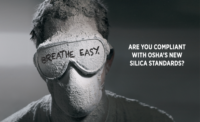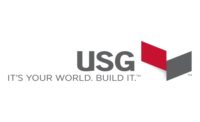Through education and product innovation, Hilti is supporting customers as they develop and implement compliancy plans for the new Occupational Safety and Health Administration 1926.1153 Respirable Crystalline Silica Standard for construction.
Because of Hilti’s commitment to helping contractors provide a safe working environment, the company has scheduled a series of webinars and has a whitepaper about the OSHA RCS Standard. Companies can also speak with their local Hilti sales representative for more information.
First introduced in March 2016, the OSHA RCS Standard introduces more stringent “permissible exposure limits,” moving from approximately 250 micrograms/m3 averaged over an 8-hour day to 50 micrograms/m3 averaged over an 8-hour day. All companies that engage in silica-generating applications, such as cutting, grinding, drilling or breaking concrete and/or masonry, have until June 23, 2017 to fully comply with the new standard and have a written exposure control plan on file.
In the new standard OSHA provides companies with three different options for compliance:
1.Table 1: A table of pre-defined applications and approved control solutions available in the market today. (Table 1)
2.Performance or ‘Objective data’: Providing objective data proving exposure associated with the control method used.
3.Scheduled air monitoring program: Establishing frequency of exposure monitoring activities.
OSHA will also require companies to offer medical surveillance (exams) to employees that are required by the standard to wear a respirator for more than 30 days per year.
Hilti’s U.S. team has been diligently researching the new guidelines, as well as the impact it will have on customers. As part of these efforts, Hilti enlisted the help of a third-party consultant to arrange a workshop for OSHA executives, industry experts and more than 30 large U.S. construction company representatives. The workshop helped to clarify details about the new standards and provide answers to common questions. This white paper, “Understanding New OSHA Standards for Silica Dust in the Construction Industry,” summarizes all the information covered during that seminar.
Hilti employees that engage with contractors have also received training on the new standards, so they can help address the needs of contractors who are reviewing their compliancy options.
In addition, Hilti is hosting two webinars (Feb. 28, March 15, and March 29) to help educate and answer customer questions about the new OSHA RCS Standard.
Hilti currently has an extensive dustless product portfolio that will help companies comply, and the company is committed to developing additional innovative products, as well as creating objective data (outlined in Option 2: Performance Option), to help customers comply with the OSHA §1926.1153 Respirable Crystalline Silica (RCS) Standard.
To attend a webinar, download the white paper and other documents related to the new standard, please visit Hilti online. OSHA information about the new standard can be found at www.osha.gov/silica.





Report Abusive Comment